Old lingerie and nightwear sewing patterns
This pattern for a slip and half-slip was from before elastic was used in waist bands. The half-slip fastened with a 5/8” button. The side opening of the slip was fastened with press-studs.
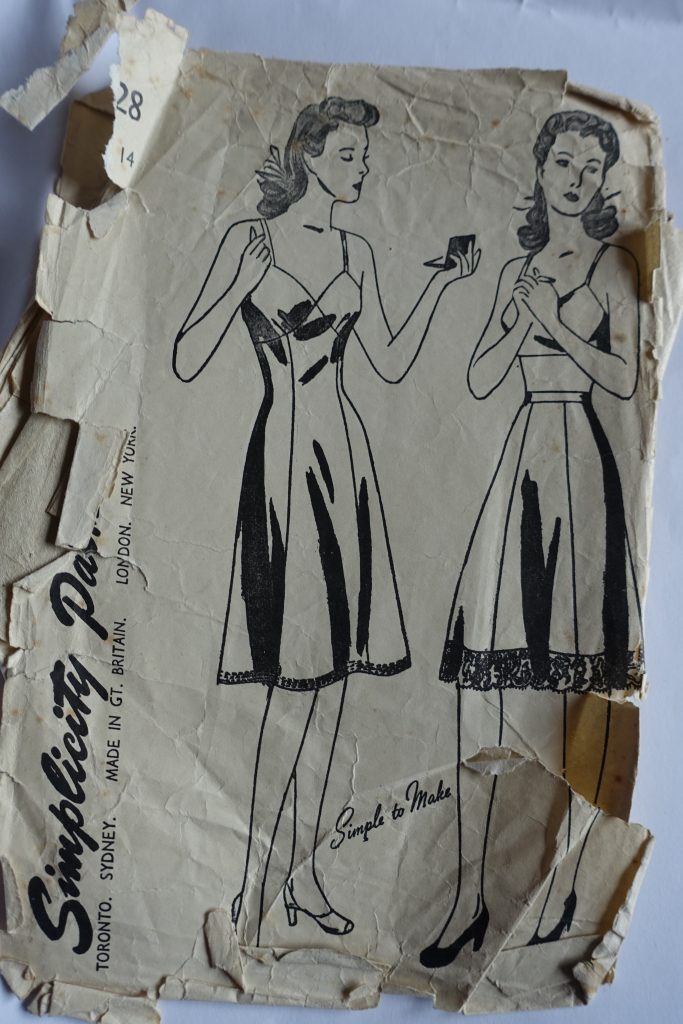
This wartime pattern reminds professional dressmakers to comply with the Making of Civilian Clothing (Restriction) Order. The pattern could be used to renovate an old garment or use new fabric. The suitable fabrics stated on the pattern were rayons, satin, crepe-de-chine, voile or Celanese. The latter was a fabric manufactured from cellulose. The company was taken over by Courtaulds in the 50’s.
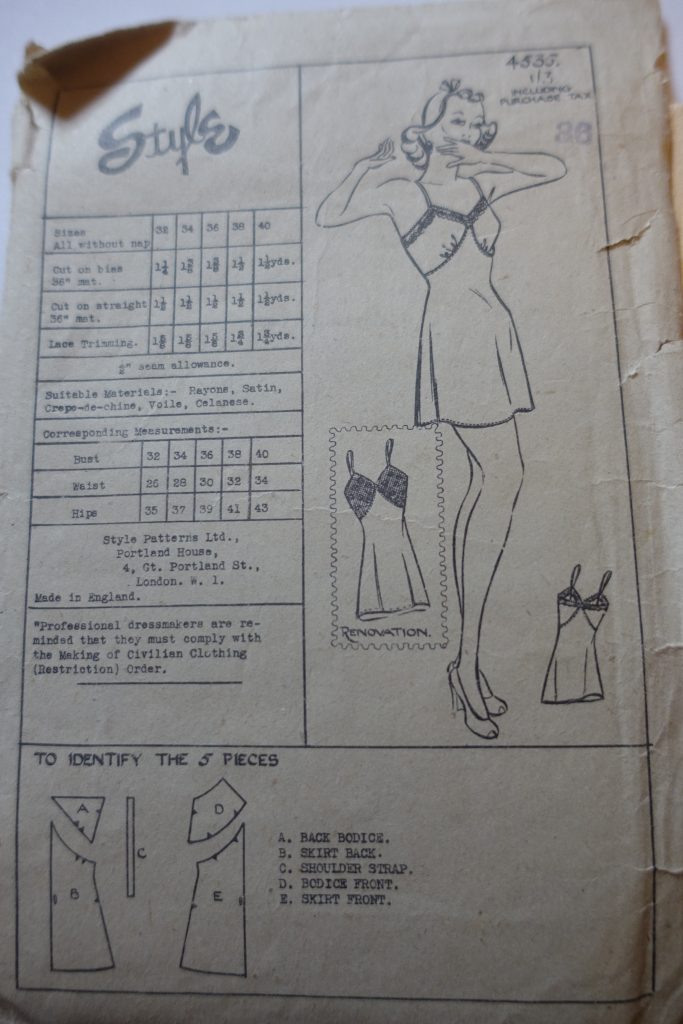
This 1940’s pattern has with it the original pages from the magazine, Woman’s Illustrated, it was ordered from. The pattern and 2 yards of Cash’s lingerie ribbon cost 2 shillings and sixpence. The magazine write-up, by a Sarah Redwood, says that a women’s undies form the basis of good dressing. “No woman can hope to make the best of her clothes unless her undies are prefect. We believe that the undies we bring you this week will be the envy of women throughout the world.” The undies, designed by Annek of Paris, included a nightie, panties, cami-knickers, slip and waist petticoat. This latter was designed to wear with the newest full skirts from Paris – to give them the “finished swagger, that romantic rustle.” The article went on to say where the material to make the articles could be bought. Marshall Fabrics had stock of nylon sheer or printed satin. Peter Robinson of Oxford Circus had stock in ivory, turquoise, pink, sky or peach all with a tiny flower design. One could view the undies made up in the fabric hall for a week. Gorringes of Victoria were displaying the undies in their fabric department and in their window. Rowntrees and Sons of Scarborough were also displaying the undies in their window at 31 – 39 Westborough (pictures of these stores are available on Google Images). If made from nylon, the edges of the garments could be finished with nylon picoting. Singer shops charged sixpence a yard for picoting.
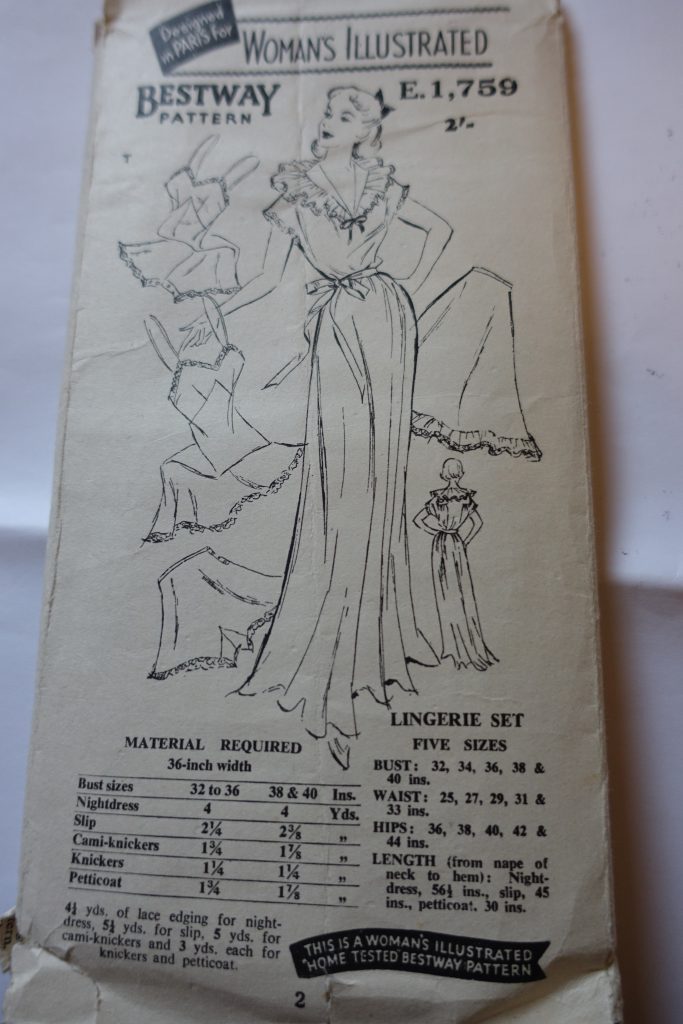
Vogue pattern from 1950 for bra slip with or without flounce. The bra part used feather boning. Suitable fabrics were crepe, taffeta, batiste, lingerie satin, organdie, lawn or bra lace.
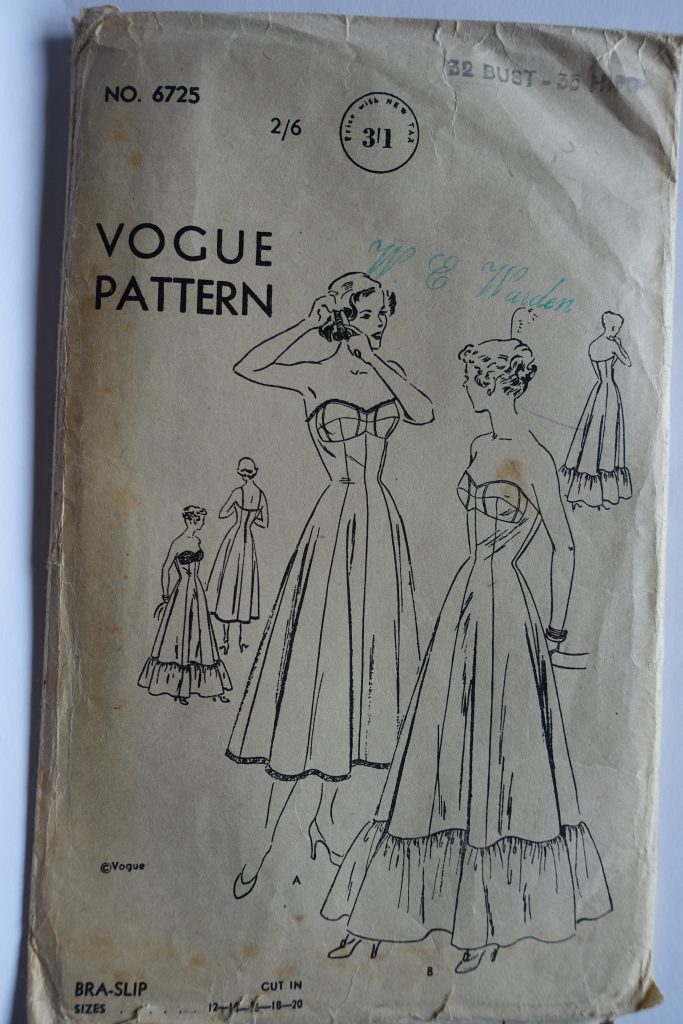
1950 nightgown in two lengths.
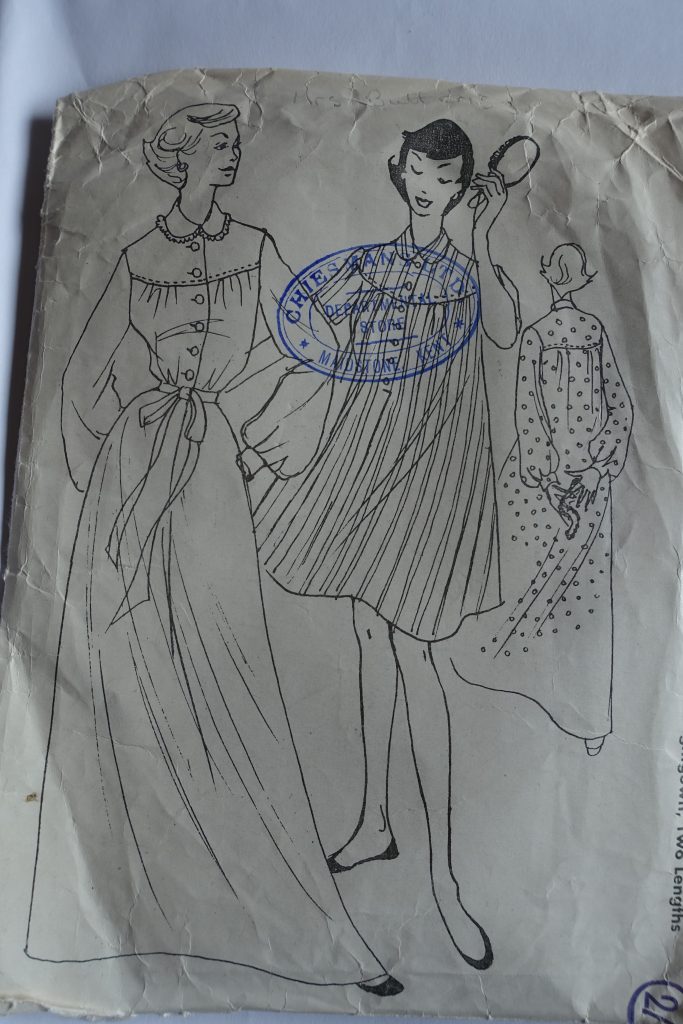
Early 60’s baby doll pyjama with shortie pantie or 3/4 length trouser. Suitable for fine cottons, seersucker, nylon, terylene, lingerie silk or rayons.
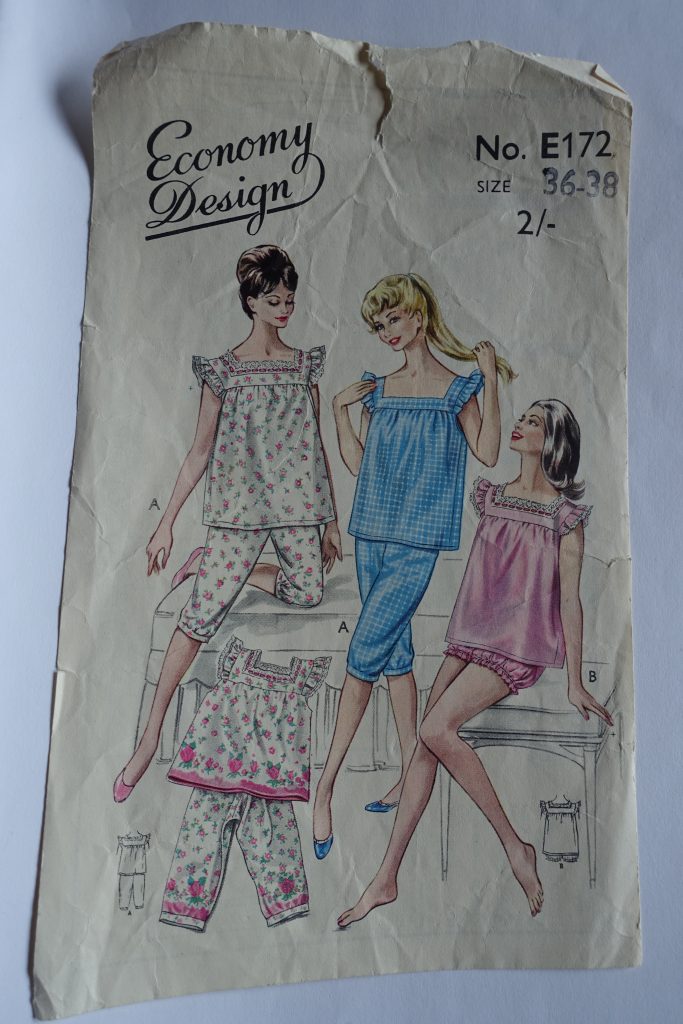
60’s nightie and negligee pattern suitable for making in nylon, silk, rayon, lawn or cotton.
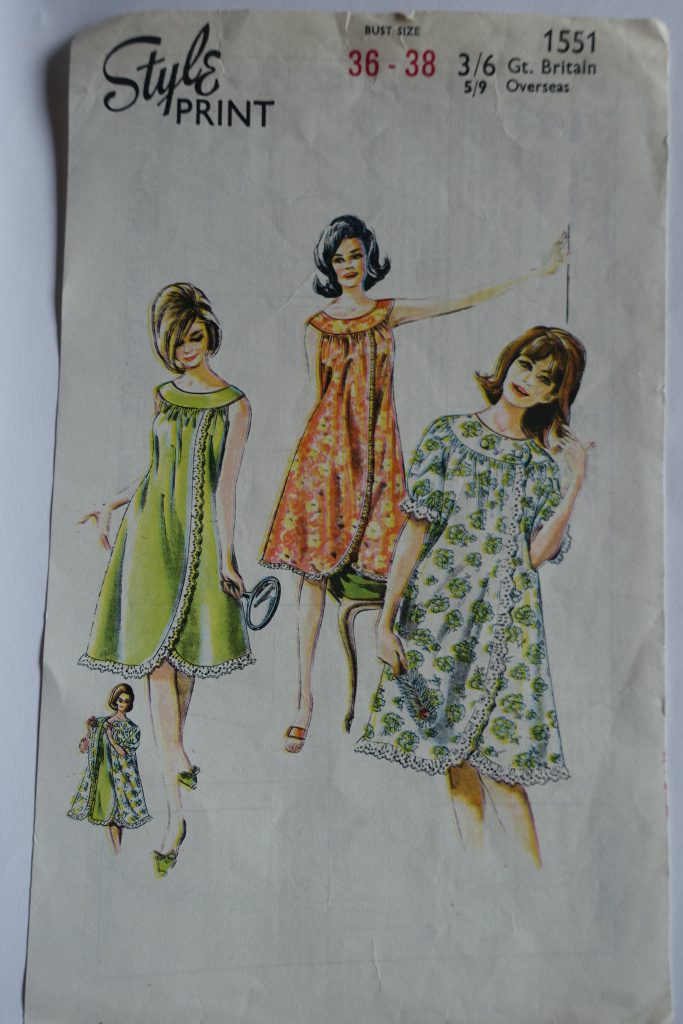
Pattern from 1970 for nightdress or pyjamas. Top is gathered onto a yoke. Trousers had elastic waist. Suggested fabrics were lingerie cotton, lawn, voile, silk, crepe, brushed rayon or satin.
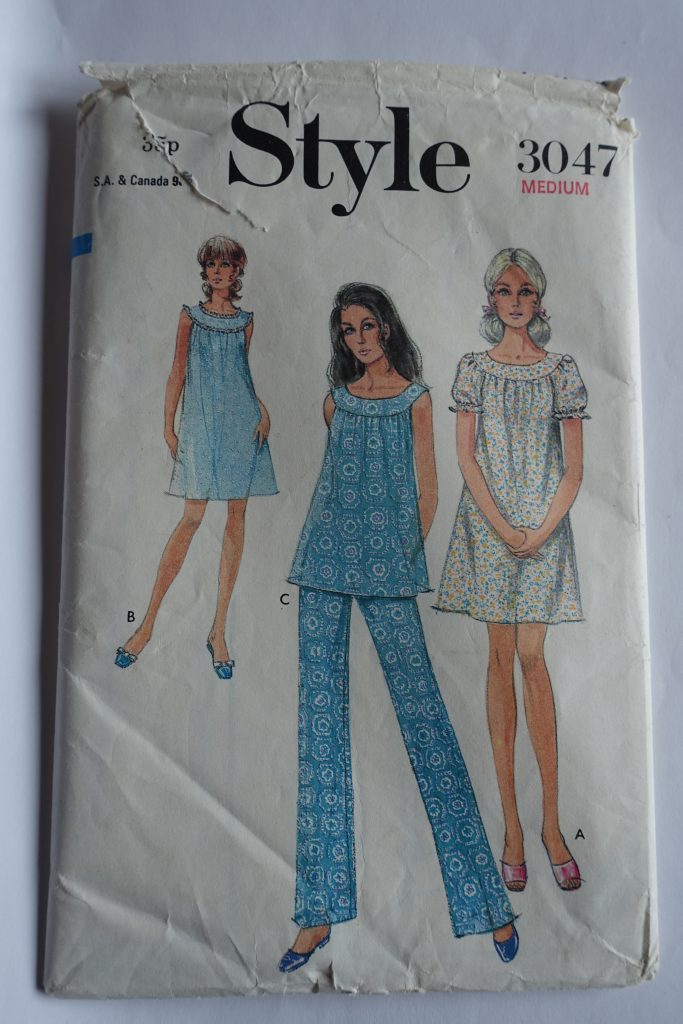
1976’s nightdress or pajamas (American spelling despite the pattern having been printed in Britain). The trousers have an elasticated waist. The sleeves can be finished with a pretty frill.
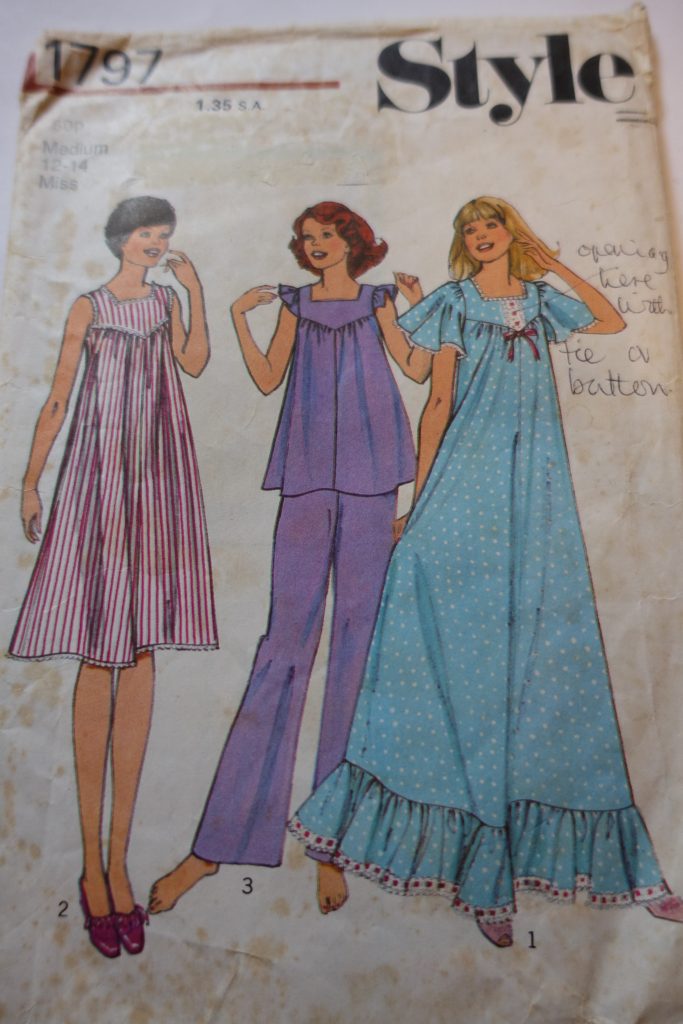

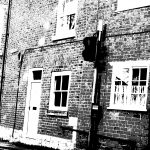





Leave a Reply